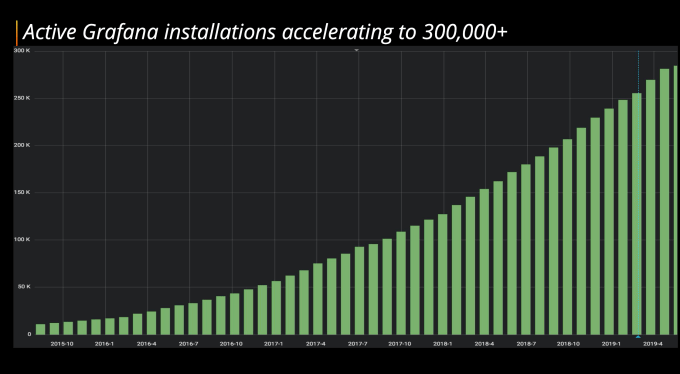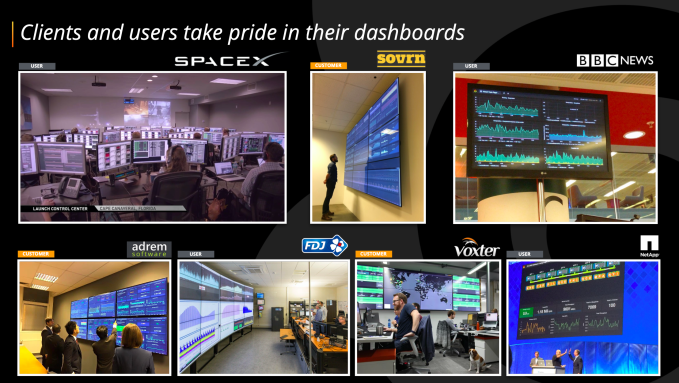Before he was a partner at Lightspeed Venture Partners, Gaurav Gupta had his eye on Grafana Labs, the company that supports open-source analytics platform Grafana. But Raj Dutt, Grafana’s co-founder and CEO, played hard to get.
This week on Extra Crunch Live, the duo explained how they came together for Grafana’s Series A — and eventually, its Series B. They also walked us through Grafana’s original Series A pitch deck before Gupta shared the aspects that stood out to him and how he communicated those points to the broader partnership at Lightspeed.
Gupta and Dutt also offered feedback on pitch decks submitted by audience members and shared their thoughts about what makes a great founder presentation, pulling back the curtain on how VCs actually consume pitch decks.
We’ve included highlights below as well as the full video of our conversation.
We record new episodes of Extra Crunch Live each Wednesday at 12 p.m. PST/3 p.m. EST/8 p.m. GMT. Check out the February schedule here.
Episode breakdown:
- How they met — 2:20
- Grafana’s early pitch deck — 12:25
- The enterprise ecosystem — 26:00
- The pitch deck teardown — 33:00
How they met
As soon as Gupta joined Lightspeed in June 2019, he began pursuing Dutt and Grafana Labs. He texted, called and emailed, but he got little to no response. Eventually, he made plans to go meet the team in Stockholm but, even then, Dutt wasn’t super responsive.
The pair told the story with smiles on their faces. Dutt said that not only was he disorganized and not entirely sure of his own travel plans to see his co-founder in Stockholm, Grafana wasn’t even raising. Still, Gupta persisted and eventually sent a stern email.
“At one point, I was like ‘Raj, forget it. This isn’t working’,” recalled Gupta. “And suddenly he woke up.” Gupta added that he got mad, which “usually does not work for VCs, by the way, but in this case, it kind of worked.”
When they finally met, they got along. Dutt said they were able to talk shop due to Gupta’s experience inside organizations like Splunk and Elastic. Gupta described the trip as a whirlwind, where time just flew by.
“One of the reasons that I liked Gaurav is that he was a new VC,” explained Dutt. “So to me, he seemed like one of the most non-VC VCs I’d ever met. And that was actually quite attractive.”
To this day, Gupta and Dutt don’t have weekly standing meetings. Instead, they speak several times a week, conversing organically about industry news, Grafana’s products and the company’s overall trajectory.
Grafana’s early pitch deck
Dutt shared Grafana’s pre-Series A pitch deck — which he actually sent to Gupta and Lightspeed before they met — with the Extra Crunch Live audience. But as we know now, it was the conversations that Dutt and Gupta had (eventually) that provided the spark for that deal.
“My own view of pitch decks is that, obviously, they’re important, but I’d encourage other founders to kind of try to have more organic conversations, delving into deeper topics and angles than what was presented in the pitch deck,” said Dutt.
Gupta and Dutt reviewed the deck together and talked through some of its main narratives and topics, preparing for Dutt to pitch the broader Lightspeed partnership.
“There was the slide around the company’s open-source traction,” said Gupta. “In particular, just the number of instances of horizontal running. Some of those charts that we saw, I mean, it’s sort of like the data speaks for itself.”

Image Credits: Grafana Labs
“They had this slide with images of dashboards at different companies,” recalled Gupta. “I remember just saying, ‘Hey, guys, look at these, look at this and how important this product is. All these major companies.’ By the way, that list doesn’t stop here. It’s just incredibly visual. The idea that this product is sitting in front of people in these mission-critical situations at places like SpaceX. That just emotionally resonates with people when you’re thinking about investing in a company.”

Image Credits: Grafana Labs
Based on what he’s learned over the past years creating different pitch decks and looking back at this early one, Dutt said the first step is building a cohesive narrative.
“Talk about where you’ve come from and where you’re going and make all that fit together rather than ‘Here’s some data,’ and ‘Here’s why we’re a good company’,” said Dutt. “A story, I think, is much, much more powerful.”
Not all investors care about the same things, he added. Using Grafana as an example, he noted that some VCs don’t fully grasp open source, whereas others may fully understand it, “So going through that stuff will be kind of yawn-inducing.”
The last lesson: Practice makes perfect.
“When I first met Gaurav, I was a lot more challenged in telling the story about Grafana Labs and what we were about,” said Dutt. “We were very heads down, building these open-source projects and trying to create good software, and we just hadn’t thought a lot about the narrative. Over the years, that’s gotten a lot better, but it’s also become a lot more self-evident to us and much clearer as we write and build the business.”
All that said, the pitch deck wasn’t entirely sunshine and roses for Gupta. A particular slide around the big tent open-source ecosystem strategy at Grafana didn’t initially sit so well with the Lightspeed partner.
“The truth is, I was skeptical of this when I first met Raj,” said Gupta. “Raj convinced me that this is actually the future. When you actually debate something with somebody and they convince you of something, that gives you almost more conviction around it.”
The enterprise ecosystem
One of the major shifts we’ve seen in the enterprise space is the move from subscription-based pricing to usage-based pricing.
Gupta explained that, for enterprise infrastructure in particular, usage-based pricing essentially penalizes a company for getting new users on their product. The old way of doing it, he said, was to make users predict what they might use, and sell them more than that, and ultimately make them feel bad about it. Paying for only what you use, on the other hand, feels really fair for everyone, he said.
“The reality is … to actually build a product that scales in that way is really, really hard,” said Gupta.
We also talked about pricing a product, in general. Many founders are, rightfully so, incredibly focused on their product and solving a problem. When it comes time to package and price that product, it can be overwhelming.
Dutt said pricing is something Grafana is still refining to this day, calling it a “consistent and frustrating topic.” He said the company’s initial predictions about the kind of customers they would serve were fundamentally incorrect.
When Grafana launched, the team felt they were much more oriented toward SMBs with lower entry points and usage-based models, but soon found that larger corporations were much more willing to pay for this type of product, forcing Grafana to reposition itself and face the Fortune 500.
“I think that a lot of companies tend to underprice rather than overprice,” said Dutt. “At least, that’s my gut feeling in this space. We have two products and two sales motions. We have an enterprise product, we have a cloud product, we have a self-serve motion and we have a more enterprise sales motion. It’s hard to rationalize all of that. We’re still struggling. It’s definitely a complicated, nuanced topic.”
The pitch deck teardown
The last half of the episode is all about the audience: Audience members can submit pitch decks and have our speakers take a look through them. Watch the full pitch deck teardown in the video below, but here are some of the key insights from Gupta and Dutt.
- The earlier you are as a company, the more the team slide needs to be front and center.
Almost always, start with the team slide or the person slide. With these seed investments, the ideas always change. When a company is really early, investors are wondering if this is a person that I believe really understands the space.
- No matter what, show the product. If you’re early and don’t have a product, showing a prototype or Figma design is better than showing images that imply it already exists.
I didn’t quite exactly get what the UX would have been until I saw the screenshots. It’d be better if it was some sort of Figma design. It would look a little bit less like I drew a box over a screenshot. A design or prototype would make it seem like the person had thought through exactly how the product would manifest itself in terms of user experience.
- Even if you don’t have customers yet, share survey results or potential customer interviews that show this product is valid in the market.
It costs nothing to go talk to 30 people that might use this one day. Hopefully, out of that, you get some validation for your idea, and you put their quotes in there, you put the logos in there and you don’t say they’re customers, but you that you talked to all these people. We did our homework, and there is demand.
